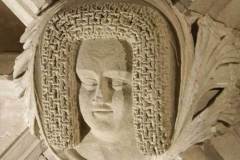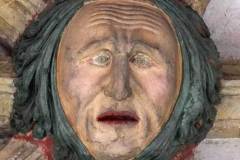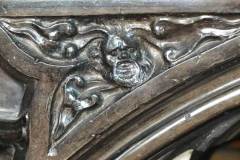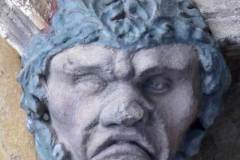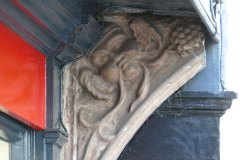The Cathedral contains many examples of figures known as green men or foliate heads. We have selected over 40 examples which are illustrated in the following pages. For each image we give a location and approximate date. Such objects appear in churches and cathedrals throughout western Europe and beyond. Some styles and features are found repeatedly – the following text draws attention to each type, with Canterbury examples.
This article does not cover the allied topic of bestiary animals – for these, separate pages are in preparation. The boundary between the two is not always clear cut.
Many past authors have provided examples of foliate heads and tried, with varying levels of success, to ‘explain’ them. This seems to be an area where ideas abound but concrete evidence is rare. Suggestions are drawn from allegories, heraldry, the bible, and other cultural and historical writings. Writers have pointed to links with pre-Christian deities; as a symbol of rebirth; the seasonal importance of spring; its relationship to ‘Jack in the Green’; its relationship to the idea of resurrection; the predominance of male subjects; the overlap with foliate animals (particularly cats and lions); the overlap with foliate demons and wild men; the examples with a protruding tongue; and so on. Authors have also drawn links between 14th century images and fear of the Black Death.
Treatment of the various styles and types extends over the following three pages – click below to learn more.
A Where to find them in the building
B Types of subject (man, woman, fantasy creatures, etc)
Sources: Basford (1978); Cave (1948); Millar (1997); Negus (2003)
DL


